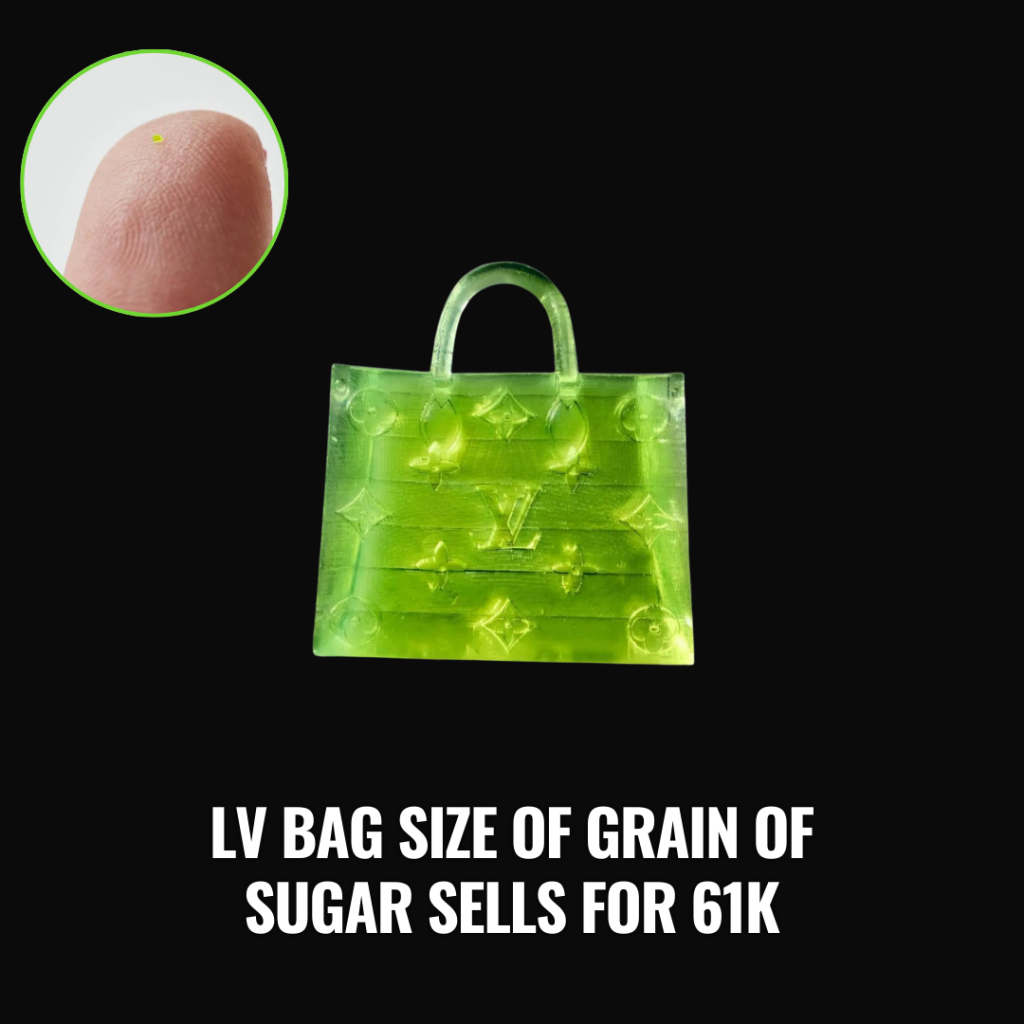
Luxury brands are no strangers to making headlines, whether for record-breaking sales or outlandish creations. But Louis Vuitton, known for its iconic and often pricy handbags, has gone miniature in an unprecedented way: an LV bag smaller than a grain of salt recently sold for a staggering $61,000. This tiny accessory has captured attention worldwide, sparking curiosity, disbelief, and fascination. How did such a minuscule item come to be, and why is it fetching such a high price? Let’s dive into this incredible piece of microscopic art.
What Is the World’s Smallest LV Bag?
Louis Vuitton’s iconic monogrammed bags have always been coveted, but this micro version takes things to a whole new level—literally. Measuring at a minuscule 657 microns, this bag is roughly the size of a grain of sea salt and is invisible to the naked eye. Even traditional crafting tools were out of the question for a project this delicate. The bag was created using advanced 3D-printing technology typically reserved for scientific and medical purposes, making this accessory a true marvel of both luxury and technology.
The Art and Technology Behind the Mini LV Bag
To bring this bag to life, engineers and artists teamed up with 3D-printing experts to push the boundaries of what’s possible in design. Using two-photon polymerization, a specialized technique in 3D printing, they were able to produce a bag with Louis Vuitton’s recognizable monogram in microscopic detail. The precision of this process allows for the accurate recreation of even the most minute details, resulting in a tiny masterpiece that perfectly mimics its larger counterparts.
This technological feat wasn’t simply about making a small object; it was about creating a piece of art that celebrates craftsmanship, attention to detail, and the spirit of luxury in a whole new way.
Why Would Anyone Pay $61,000 for a Bag This Small?
It’s easy to wonder why such an item would garner a price tag of $61,000. Here are some reasons why collectors were willing to invest such a sum in something they can’t even see without a microscope:
- Exclusive Artwork: This isn’t just a tiny handbag; it’s a statement of modern art and technology. The appeal of owning a one-of-a-kind creation from a renowned luxury brand adds to its exclusivity and value.
- Luxury Novelty: In a world where luxury has been redefined to include experiences and unique objects, the miniature LV bag fits perfectly into the trend of high-priced exclusives for those who “have everything.”
- Technology Meets Art: The microscopic LV bag is more than just a luxury item; it’s a showcase of advanced 3D-printing technology. As a cutting-edge intersection of art, fashion, and technology, it appeals to high-end collectors interested in groundbreaking design.
- Curiosity and Social Buzz: Items like this often gain viral traction, making them more valuable due to the public intrigue and rarity factor.
The Future of Micro-Fashion
The creation of this miniature bag may seem whimsical, but it actually reflects a larger trend within luxury fashion—an increased focus on innovative, boundary-pushing creations. While the vast majority of consumers may never own such an item, it’s clear that micro-fashion and the marriage of technology and style are here to stay.
Will other brands follow suit, creating microscopic versions of their most iconic pieces? Or will this remain a one-time masterpiece? Whatever the future holds, the world’s tiniest Louis Vuitton bag has already made its mark, proving that sometimes, the smallest things can make the biggest impact.




